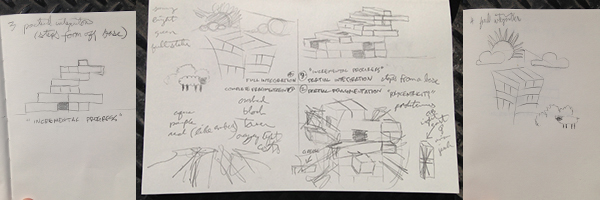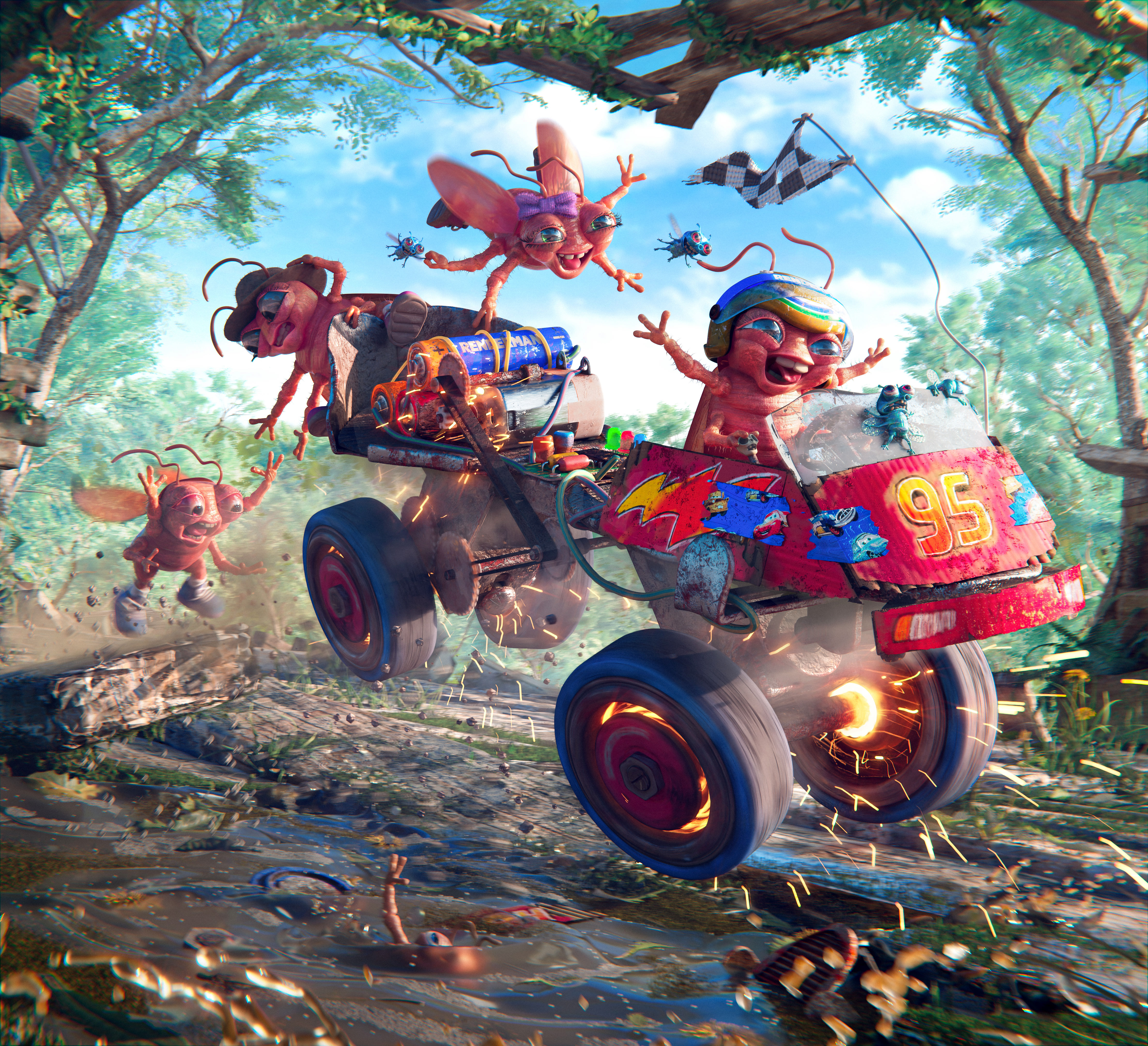A good friend invited me to contribute editorial creative to a project managed by one of his colleagues at the German Marshall Fund of the United States. I felt this would be a perfect opportunity to work creatively on a project concerning foreign policy issues, which have always been of interest to me. Specifically, the assignment was to create an editorial graphic depicting the consequent conditions of each of the four forecasted outcomes of European policy vis à vis European partners and the rest of the world.
I received a working copy of the policy paper that described in fascinating detail a variety of possible conditions, not only in abstract geopolitical terms but also in terms of the potential realities on the ground. All of these disparate elements had to be symbolized in a unified way. I kept returning to the idea of wooden stacking blocks to depict these elements of the of the four policy consequences.

These were some of my initial sketches.
The four graphics needed to display the ways European nation-states might continue to integrate or fragment, given economic and political conditions, as follows :
I. FULL INTEGRATION : returning to stable growth, open to accession of members
II. PARTIAL INTEGRATION : incremental progress toward better surveillance and and rules
III. PARTIAL FRAGMENTATION : movement towards polycentricity, as a multi-directional Europe emerges
III. PARTIAL FRAGMENTATION : movement towards polycentricity, as a multi-directional Europe emerges
IV. COMPLETE FRAGMENTATION : disorderly, weakened coordination leads to the deterioration of institutions
From my familiarity with similar publications, I knew that editorial graphics accompanying research and policy papers can be a bit dull. Photographing these blocks allowed me also to set their scene. I wanted to excite and enhance the symbolic message of these uniform wooden blocks by utilizing painted paper textures and colored lights.

Here was my first-round submission, I tried to take a bold approach to research paper graphics.
(left to right) Full Integration, Partial Integration, Partial Fragmentation, and Complete Fragmentation
Although initially approved, the first-round series received a critique that the audience might not interpret them with all the myriad factors represented in the paper. While the senior director supervising the project liked the concept, the project manager requested that the setting for each be more standardized, to align with visual content already established by the publication designer.

This was the second-round set, approved.
(left to right) Full Integration, Partial Integration, Partial Fragmentation, and Complete Fragmentation
While I pushed for uniqely colorful graphics, the publication designer chose a more pared down direction. Still, I feel my ideas added to the paper, and the project manager seemed to agree, as we continue to discuss the possibility of working together on future projects.

This is how the graphics appeared within the publication.




